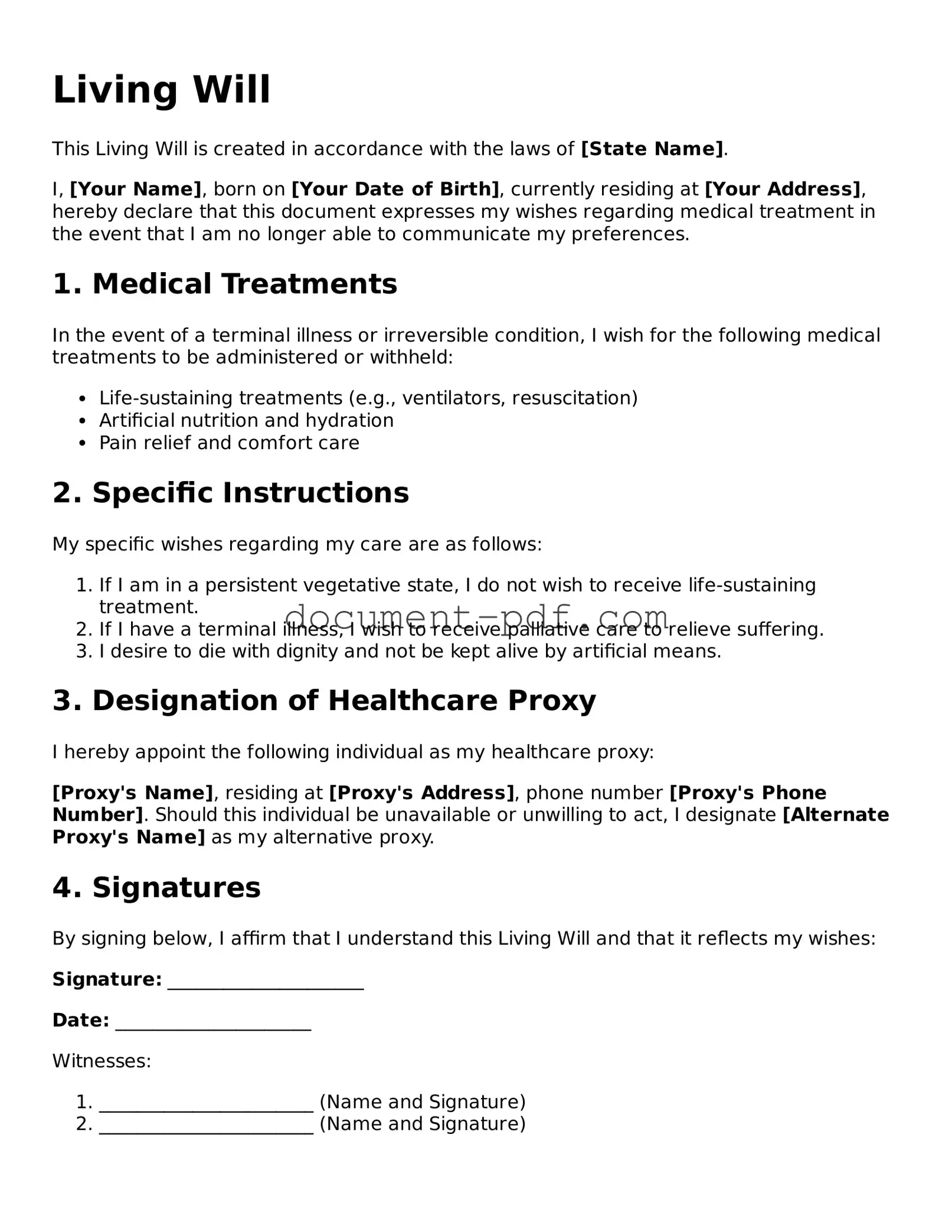A Living Will is often compared to a Health Care Proxy, which allows an individual to designate someone to make medical decisions on their behalf if they become unable to do so. While a Living Will outlines specific wishes regarding medical treatment, a Health Care Proxy focuses on appointing a trusted person to interpret those wishes and make decisions in line with the individual's values and preferences. This complementary relationship ensures that one's healthcare choices are honored even when direct communication is not possible.
Another document similar to a Living Will is the Durable Power of Attorney for Health Care. This legal document grants someone the authority to make healthcare decisions on behalf of another person. Like a Living Will, it addresses healthcare preferences, but it is broader in scope. The Durable Power of Attorney remains in effect even if the individual becomes incapacitated, ensuring that their healthcare decisions are managed by someone they trust, in accordance with their wishes.
The Do Not Resuscitate (DNR) order is also akin to a Living Will. A DNR specifically instructs medical personnel not to perform CPR if the heart stops or if breathing ceases. This document directly aligns with the individual's end-of-life preferences, much like a Living Will, which may express a desire to avoid aggressive medical interventions in certain situations. Both documents serve to communicate personal wishes regarding life-sustaining treatment.
Advance Directive is another term often used interchangeably with Living Will. An Advance Directive encompasses both a Living Will and a Health Care Proxy, providing a comprehensive approach to healthcare decisions. It includes instructions about medical treatment preferences and appoints an agent to make decisions if the individual cannot. This holistic document ensures that all aspects of a person's healthcare wishes are clearly articulated and respected.
The Physician Orders for Life-Sustaining Treatment (POLST) form is similar in that it provides specific medical orders regarding treatment preferences. Unlike a Living Will, which is more general, the POLST translates a person's wishes into actionable medical orders that healthcare providers must follow. This document is particularly useful for individuals with serious illnesses, ensuring that their treatment preferences are honored in emergency situations.
For those looking to delegate authority effectively, the comprehensive General Power of Attorney options provide a structured method to manage your financial affairs through a trusted individual.
A Medical Power of Attorney is another document that aligns closely with a Living Will. This legal instrument allows an individual to appoint someone to make healthcare decisions on their behalf. While a Living Will provides directives about specific treatments, a Medical Power of Attorney empowers the appointed person to make choices based on the individual's best interests and previously expressed wishes. This creates a safety net for healthcare decision-making.
The Release of Medical Records is also important in the context of a Living Will. While it does not dictate treatment preferences, it allows designated individuals access to a person's medical information. This access is crucial for those making healthcare decisions, as it ensures they are fully informed about the individual's medical history and current condition. Understanding this information can help them make choices that align with the individual's wishes.
In some cases, individuals may create a Funeral Directive, which outlines their preferences for funeral arrangements and disposition of remains. While not directly related to medical treatment, it reflects a person's wishes regarding end-of-life matters. A Funeral Directive complements a Living Will by ensuring that all aspects of a person's final wishes are respected, providing peace of mind to loved ones during a difficult time.
Lastly, the Mental Health Advance Directive is similar in that it allows individuals to express their preferences regarding mental health treatment. This document is particularly relevant for those who may experience mental health crises. Like a Living Will, it provides guidance on treatment preferences and appoints someone to make decisions if the individual is unable to do so. This ensures that their mental health care aligns with their values and desires.
